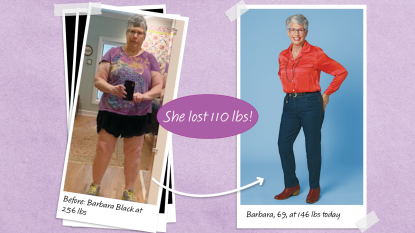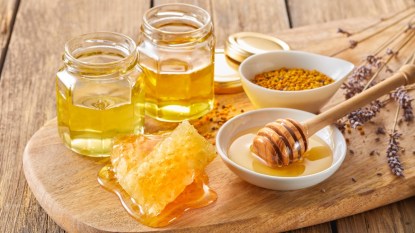The Astonishing Healing Power Of Citrus Rinds, Zest & Pith — Doctors Reveal Why You Need the Hesperidin They Offer
An overlooked compound can boost circulation, lower blood pressure, ease joint pain + dial down allergies!
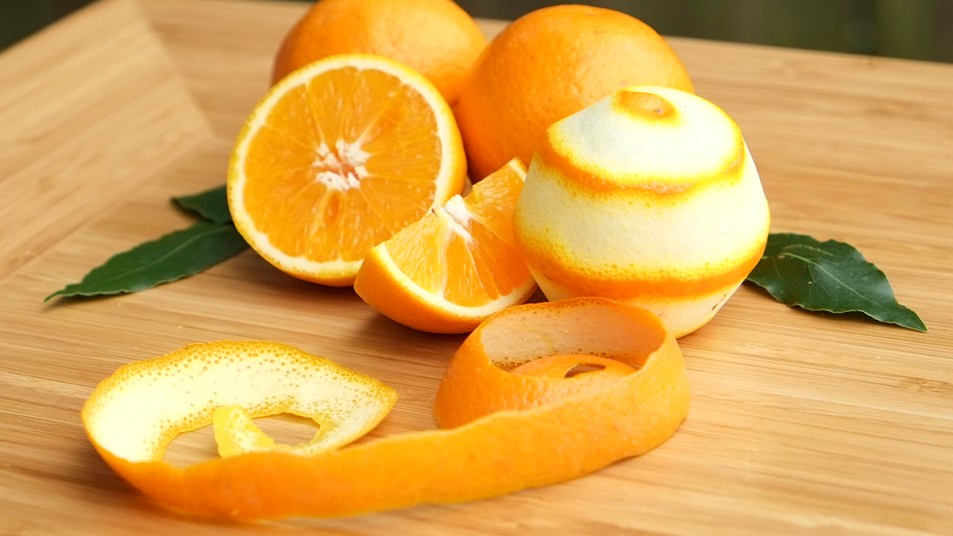
What if we told you that simply tossing a few citrus rinds in your morning cup of tea as it brews or adding more orange zest to your favorite dessert could help keep your hands and feets from getting cold, fend off hemorrhoids, improve overall heart health, dial down allergy symptoms and more. So easy, right? Based on new research related to a key nutrient found in citrus peels, researchers are recommending working more of the fruits’ peel and pith (the white stuff) into your daily diet. Here’s why something so easy as zesting could reap you the startling benefits of hesperidin.
What is hesperidin?
Hesperidin is a plant nutrient known as a bioflavonoid (a plant compound with antioxidant properties), that is primarily found in the rinds and peels of citrus fruits such as oranges, grapefruits, and lemons. It is often extracted and used in supplements for its potential health benefits. Hesperidin is primarily found in the the solid tissues of the citrus fruits (the rind and the pith), but citrus juices also contain some of the beneficial compound.
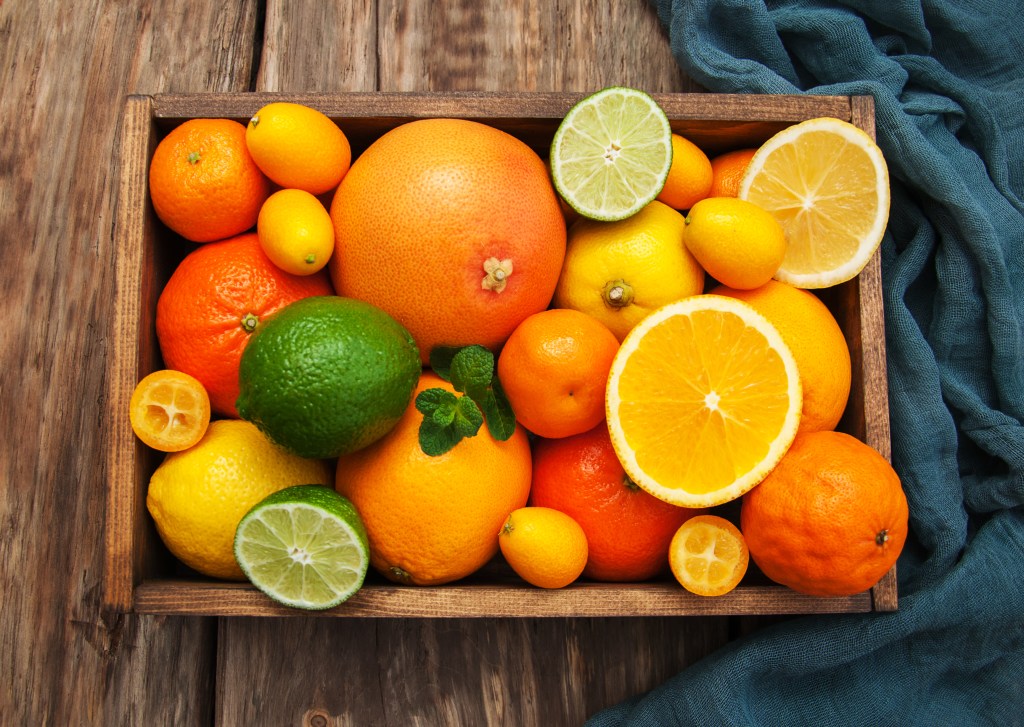
6 health benefits of hesperidin
As an antioxidant, hesperidin’s main strength is its ability to prevent cell damage, which naturally happens with age. “It does so by neutralizing free radicals and minimizing environmental stress, both of which are associated with many serious health conditions including heart failure and even cancer,” explains John Whyte, MD, MPH, a practicing physician in Washington, D.C. and author of Take Control of Your Heart Disease Risk. “Inflammation and oxidation are associated with many serious health conditions affecting the cardiovascular, neurologic, and immune systems, including heart failure and even cancer, so stopping or slowing oxidation or inflammation can be very beneficial.”
1. Hesperidin can heal blood vessels
“While it has many powerful healing benefits, hesperidin’s heart and blood vessel healing properties make it my number one pick for women over 50,” explains Michelle Schoffro Cook, PhD. “It is beneficial for many vascular conditions including: poor circulation, varicose veins, and hemorrhoids. It works by reducing inflammation in the blood vessels and targeting harmful free radicals that can damage the blood vessels.” Human studies have shown that significant and lasting anti-inflammatory benefits occur within 6 weeks of supplementation. “Hesperidin interacts with various signaling pathways that allow it to modulate inflammation and blood vessel dilation,” explains Whyte. “This also gives it the ability to be a natural pain-reliever” (more on pain below).
2. Hesperidin lowers high blood pressure
Research in Frontiers in Nutrition indicate that hesperidin can improve blood vessel function and reduce blood pressure. In fact, a study published in the European Journal of Nutrition found roughly 16 ounces of hesperidin-enriched orange juice to have positive effects on blood pressure, both immediately and over time. The study concluded that enriched orange juice could be a helpful supplemental treatment for people with pre-hypertension and stage 1 hypertension (high blood pressure).
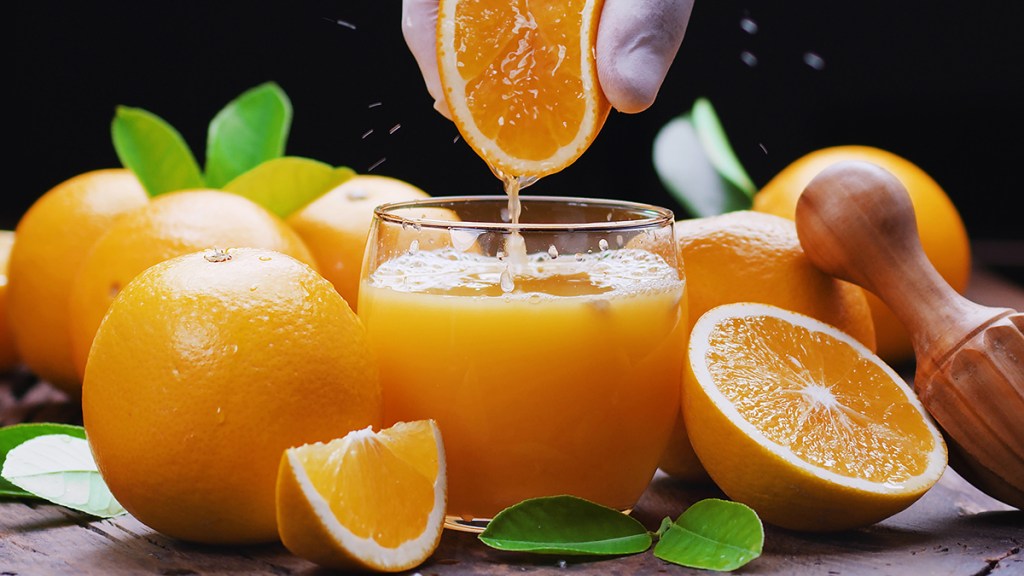
3. Hesperidin can improve glucose control
Several studies on diabetic animals have found hesperidin supplements to improve blood glucose control, therefore potentially preventing the development of insulin resistance, a symptom of diabetes that limits the body’s ability to self-regulate blood sugar.
4. Hesperidin eases lung conditions and joint pain
Ongoing research by Experimental and Therapeutic Medicine also shows promise in the antioxidant’s prevention of inflammatory lung conditions like asthma and chronic obtrusive pulmonary disease, as well as its potential in the treatment of osteoarthritis-related joint pain. Additionally, a study published in AMB Express found hesperidin supplementation to treat glaucoma — a disease that damages the eye’s optic nerve — in rats by preventing oxidative stress.
5. Hesperidin reduces allergy symptoms
“Hesperidin is great for allergy sufferers because it works as a natural antihistamine,” explains Dr. Cook. So, if you suffer from seasonal allergies or hay fever, hesperidin is a good option.
6. Hesperidin can support brain health
Animal studies have found the antioxidant and anti-inflammatory effects of hesperidin to specifically remedy symptoms of Alzheimer’s disease, Parkinson’s disease and multiple sclerosis.
How to get hesperidin benefits from juice
Hesperidin is exclusively found in citrus fruits: such as mandarin oranges, grapefruits, lemons and limes. “However, hesperidin found in oranges has the highest bioavailability, meaning it’s most easily absorbed by the body,” explains Mark Loafman, MD, the family and community medicine chair at the Cook County Health and Hospitals System in Chicago, Illinois. “Because the highest concentration of hesperidin is in the citrus rind, it’s best to aggressively squeeze oranges and other citrus fruits when preparing juice.” In other words, the “cloudier” the juice, the more hesperidin it is likely to contain.
How to get hesperidin benefits from zest and rinds
“Nothing beats the simple peel-and-eat method,” says Dr. Whyte. “To get that extra potent boost from the dimpled skin, zest oranges and lemons into your cooking as often as you can.” You can add zest to oatmeal, pasta, soups and dessert.

To ensure you’re getting the most out of your produce — and to keep the whole fruit from going to waste, Dr. Whyte says you can also make teas or water infusions using the citrus peels. Simply steep the rinds in hot or cold water, and drink up. (Take a page from bartenders’ books and bend a citrus peel horizontally, expressing its oils over your drink for extra goodness — flavorfully and biochemically.)
Also, make sure you’re eating the white fibrous parts of the citrus fruits known as the pith. “That’s where the bulk of hesperidin is found, yet few people eat this part of the fruit,” says Dr. Cook. “And, without it, vitamin C absorption is significantly reduced.” So, you might think you’re getting lots of vitamin C in that orange or grapefruit but it’s essential to eat the white pith to fully reap the benefits of the vitamin C and hesperidin it contains. (Click through to learn how to make Martha Stewart’s delicious citrus chips.)
Supplementing to get hesperidin benefits
You may be curious about hesperidin supplements, but Dr. Loafman recommends always reaching for the dietary version of a nutrient before picking up an unregulated bottle at the supermarket. “Some supplements tested were shown to raise hesperidin blood levels, but we always remind people that supplements are not regulated, and the bioavailability of the actual level of active ingredient varies widely in different formulas,” he explains. Plus, bioavailability and absorption are generally better in dietary sources anyway, he adds. Just keep in mind that if you go the orange juice route, fresh squeezed is preferred — or at least make sure to check ingredients labels of packaged drinks to count out excess sugars.
Some people, including those with circulatory conditions like venous insufficiency, may need to supplement with hesperidin to obtain sufficient amounts needed to combat medical needs. “A typical dose is 100-150 mg, 2 times daily but it’s best to check with your doctor first if you have a health condition or are taking any medication,” says Dr. Cook. She also notes that hesperidin may reduce blood pressure or reduce blood clotting so it may interact with drugs used for these reasons, so always check with your doctor before taking it.
Read on for more citrus health hacks:
This Sweet Citrus Snack Will Satisfy Your Sugar Cravings and Boost Your Immunity
Here’s How the Humble Mandarin Orange Eases Inflammation, Lowers Cholesterol, and Decreases Blood Pressure
This content is not a substitute for professional medical advice or diagnosis. Always consult your physician before pursuing any treatment plan.









